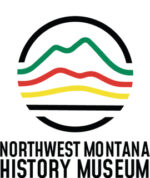The Land of Many Stories
On May 11, 1910, President Taft signed the legislation that established Glacier National Park as a “public pleasuring ground” to be preserved in a “state of nature.”
Those words in the park’s authorizing statement became the framework for the future management, development, and use of federal lands and the defining guidelines for managers, concessioners, and park visitors.
The park’s mountains, valleys, lakes, and streams determined the patterns of animal and plant life and influenced human habitation and use.
For thousands of years, people have been drawn to the rich landscape now defined as Glacier National Park.
This exhibit explores the many ways people have used and enjoyed the area – from pre‑European contact to the present day.
At its new home in the Northwest Montana History Museum, Land of Many Stories was expanded and updated in 2020.
The exhibition now includes a number of vintage T.J. Hileman photographic prints, a brand new interpretive display about the construction of the Going-to-the-Sun Road, a map on loan from the Hockaday Museum of Art, and 23 taxidermized mounts of animals who can call (or have called) Glacier National Park home.
The history of Northwest Montana as a region has always been connected to Glacier National Park.
The years before federal protection gave way to the Empire Builder and made the Flathead Valley a destination in its own right.
With new questions about the changing environment and our impact on the landscape, the ever-increasing crowds in Glacier Park, and the influx of new residents and visitors in Northwest Montana show that the Land of Many Stories exhibit is just as essential as ever.
